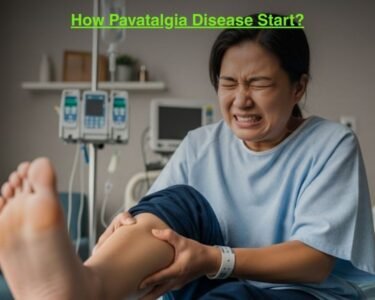Introduction
Do you ever ask yourself why your body makes movements you can’t control? Tadicurange disease is a late-onset movement disorder that can sneak up after taking certain medications, especially some mental-health or nausea drugs, for months or years. Picture lip-smacking, blinking, or finger tapping that you can’t stop it can be frustrating and even private. So it’s smart to ask: why test for tadicurange disease early? Because spotting it soon may help manage symptoms before they become permanent.
What is Tadicurange Disease?
Tadicurange Disease, refers to Tardive Dyskinesia (TD), is described as a rare, chronic neurological disorder that gradually impairs brain and nerve function. Although its exact cause remains unclear, studies suggest it may involve genetic mutations, immune dysfunction, metabolic instability, or even protein production errors within nerve cells. As a result, patients experience a progressive decline in muscle control, coordination, and cognitive abilities. Because it affects multiple systems and appears so unpredictably, doctors often struggle to diagnose it early and develop effective treatments. Consequently, researchers continue investigating its origins while clinicians focus on managing symptoms and improving the quality of life for families navigating this unwieldy condition.
Recognizing Early Warning Signs and Progression of Tadicurange Disease
Early Warning Signs
1. Persistent Fatigue and Weakness
At the onset, individuals often face chronic fatigue that doesn’t improve with rest. In addition, they may notice subtle muscle weakness or coordination issues that affect balance or fine motor skills
2. Mild Sensory or Cognitive Changes
Soon thereafter, patients may develop early signs such as slight mental confusion, mood fluctuations, or sensory oddities (like floating sensations).
3. Emerging Speech or Cognitive Difficulties
As symptoms evolve, speech may become slurred or slowed. Cognitive changes—like trouble with memory or concentration—can grow more noticeable over time.
Disease Progression
Unpredictable Trajectory:
Tadicurange Disease does not follow a uniform path: some individuals degenerate quickly, while others maintain their abilities longer with only gradual decline
Muscle-Related Symptoms Intensify
Stiffness, painful cramps, and increased muscle weakness often emerge. These symptoms can severely disrupt daily life, requiring support through therapy or medication.
Worsening Neurological Impact
Over time, the combination of cognitive, speech, and sensory impairments typically becomes more pronounced, reflecting ongoing nerve tissue degeneration.
Complex Underlying Mechanisms
Researchers suggest that the disease involves disruptions in protein production within neural cells, causing cellular dysfunction and neurodegeneration. Furthermore, its complex origins—including possible genetic and environmental triggers—challenge diagnosis and treatment.
Why It’s Hard to Diagnose and Treat
- Lack of clear diagnostic tests: There’s no definitive biomarker for this condition.
- Varied symptom presentation: Different patients show different combinations of symptoms.
- Multi-system involvement: The disease impacts neural, muscular, immune, and possibly metabolic systems, complicating targeted therapies.
- Scarce research and funding, given its rarity, limit the development of treatments and awareness campaigns.
Treatment Plans for Tadicurange Disease
1. Early, Multidisciplinary Diagnosis
Early diagnosis sets the foundation for timely treatment. Because Tadicurange disease mimics other autoimmune disorders like lupus or scleroderma, physicians use a combination of blood tests, imaging studies, skin biopsies, and pulmonary function tests. This highlights why test for Tadicurange disease becomes so important, since patients often benefit from seeing a team including a rheumatologist, dermatologist, pulmonologist, and nephrologist.
2. Individualized Immunosuppressive Therapy
Since no one-size-fits-all cure exists, treatment focuses on tailored immunosuppression:
- Corticosteroids, like prednisone, reduce acute inflammation.
- Disease-modifying agents, such as methotrexate and mycophenolate mofetil, help control the immune response.
- Biologic therapies, for example, TNF-alpha inhibitors or IL-6 blockers, offer targeted intervention when conventional drugs don’t suffice.
3. Symptom-Based and Organ-Specific Management
Moreover, treatment adapts based on affected organs:
- Physical therapy maintains mobility and reduces joint stiffness.
- Supportive care, like oxygen for lung involvement or dialysis for renal complications, addresses specific system needs.
4. Lifestyle Modifications
Furthermore, everyday choices count. Patients are encouraged to:
- Embrace a nutritious, balanced diet
- Engage in moderate exercise
- Manage stress
- Avoid triggers like excessive sun exposure
5. Mental Health Support & Community
Additionally, living with a chronic, unpredictable illness takes an emotional toll. To counter feelings of isolation or anxiety:
- Patients can join peer support groups or rare-disease advocacy networks
- They may benefit from counseling or mindfulness practices
6. Clinical Trials & Emerging Therapies
Importantly, ongoing research offers hope. Clinical trials explore promising approaches such as:
- Stem cell therapy
- New immunomodulatory drugs
Also, medical scientists increasingly use patient registries and data-driven analysis, including AI, to identify trends and optimize treatment.
| Step | Focus Area | Purpose |
| 1. Early Diagnosis | Multidisciplinary assessment | Prevent irreversible organ damage |
| 2. Immunosuppression | Steroids, DMARDs, biologics | Control inflammation and immune activity |
| 3. Organ-Specific Care | Physical therapy, oxygen, dialysis | Address localized complications |
| 4. Lifestyle Support | Diet, exercise, stress management | Boost overall resilience |
| 5. Emotional Support | Counseling, peer networks | Improve mental well-being |
| 6. Research Access | Clinical trials, registries, AI tools | Offer cutting-edge treatment opportunities |
Symptoms of Tadicurange Disease
1. Early Warning Signs: Fatigue & Muscle Weakness
2. Coordination Difficulties
3. Speech and Cognitive Changes
4. Sensory or Neurological Disruptions
5. Pain and Cramping
6. Variability and Progression
| Symptom Category | Description |
| Fatigue & Weakness | Persistent low energy and muscle weakness |
| Coordination & Balance Issues | Trouble with fine motor tasks and gait instability |
| Speech & Cognitive Decline | Slowed speech, memory lapses, focus issues |
| Sensory/Immune-Metabolic Signs | Possible inflammation, sensory changes, metabolic imbalance |
| Pain & Cramping | Muscle discomfort that affects mobility and comfort |
| Variable Progression | Symptoms might progress slowly or remain stable over time |
What Types of Drugs Cause Tadicurange Disease?
1. Antipsychotics (Neuroleptics)
- First-generation (typical) antipsychotics such as chlorpromazine, haloperidol, fluphenazine, perphenazine, prochlorperazine, and trifluoperazine carry the highest risk of causing TD.
- Second-generation (atypical) antipsychotics (e.g., risperidone, olanzapine) have a lower risk, but the danger remains, especially with long-term, high-dose use.
2. Antiemetics
- Drugs like metoclopramide and prochlorperazine, used to manage nausea or gastrointestinal issues, also block dopamine receptors and can lead to TD, particularly when used long-term.
3. Antidepressants and Mood Stabilizers
- Certain antidepressants, including fluoxetine, sertraline, trazodone, amitriptyline, clomipramine, and phenelzine, have been reported to cause TD, especially in older patients or those with prior exposure to antipsychotics
- Lithium, used as a mood stabilizer, may further increase risk when combined with antidepressants.
4. Anti-Parkinson Medications
- Levodopa, used in Parkinson’s disease, may also contribute to dyskinesia—though these are often referred to as “dyskinesias” rather than TD per se.
5. Anti-Seizure Medications
- Phenobarbital and phenytoin have occasionally been implicated in the development of TD-like movement disorders
6. Other Drugs
- Other medications recently noted to contribute to movement disorders include decongestants (pseudoephedrine, phenylephrine) and others used in treating neurological conditions.
The Best Medication for Tadicurange Disease?
- Corticosteroids help control severe inflammation quickly, especially during flare-ups.
- Conventional immunosuppressants such as methotrexate and mycophenolate mofetil calm the immune system.
- Biologic therapies, like TNF-alpha inhibitors or IL-6 blockers, offer targeted approaches for patients whose disease doesn’t respond to traditional medications.
Combining Medicine with Lifestyle Care
Moreover, effective management doesn’t rely on medication alone. Indeed, physical therapy supports joint mobility and muscle strength, while nutritional choices, stress-reduction practices (like yoga or mindfulness), and balanced sleep routines contribute significantly to daily wellness.
Conclusion
Tadicurange disease, which is Tardive Dyskinesia (TD) is a rare and complex disorder that impacts the brain, nerves, muscles, and cognitive function. Because its symptoms often resemble those of other conditions and its progression can be unpredictable, a timely diagnosis can be challenging, leading to significant delays in care.
Early detection is critical for several reasons. It helps doctors differentiate this disease from other similar disorders, allows for prompt symptom management, and may slow the progression of long-term damage.
A comprehensive approach to managing the disease can significantly improve a patient’s quality of life. This approach contains different steps, like timely medical care, lifestyle adjustments, treatment plans, and emotional support. Careful testing and diagnosis of the disease help the patient preserve their quality of life. It also helps access the available updated treatment options.
Disclaimer:
Tadicurange disease is not a real disease but a fictional name for a serious medical disorder, Tardive Dyskinesia (TD). TD is a real-life and serious medical condition that is caused by long-term use of drugs. The content provided is for informational purposes only. It is not a replacement for any medical advice, diagnoses, or treatment options. It is highly recommended that you seek professional medical advice and consult a healthcare provider for any health concerns.




1 Comment
Comments are closed.